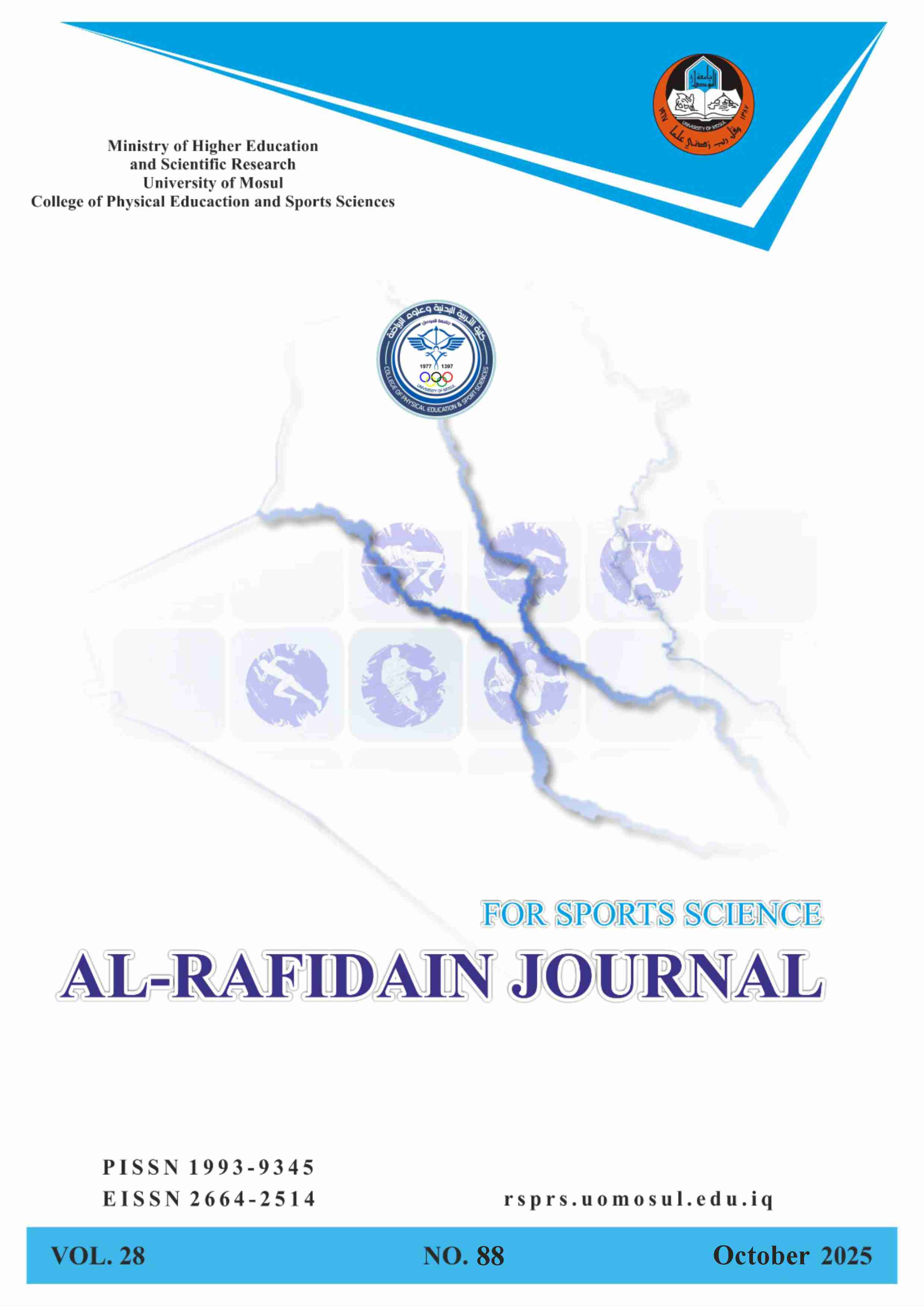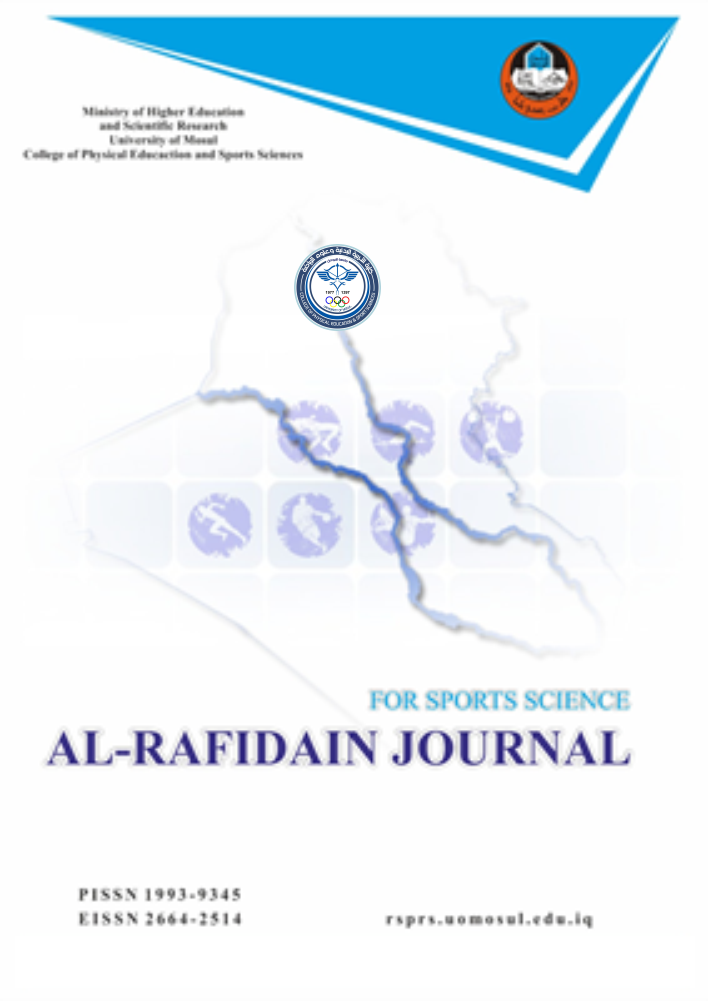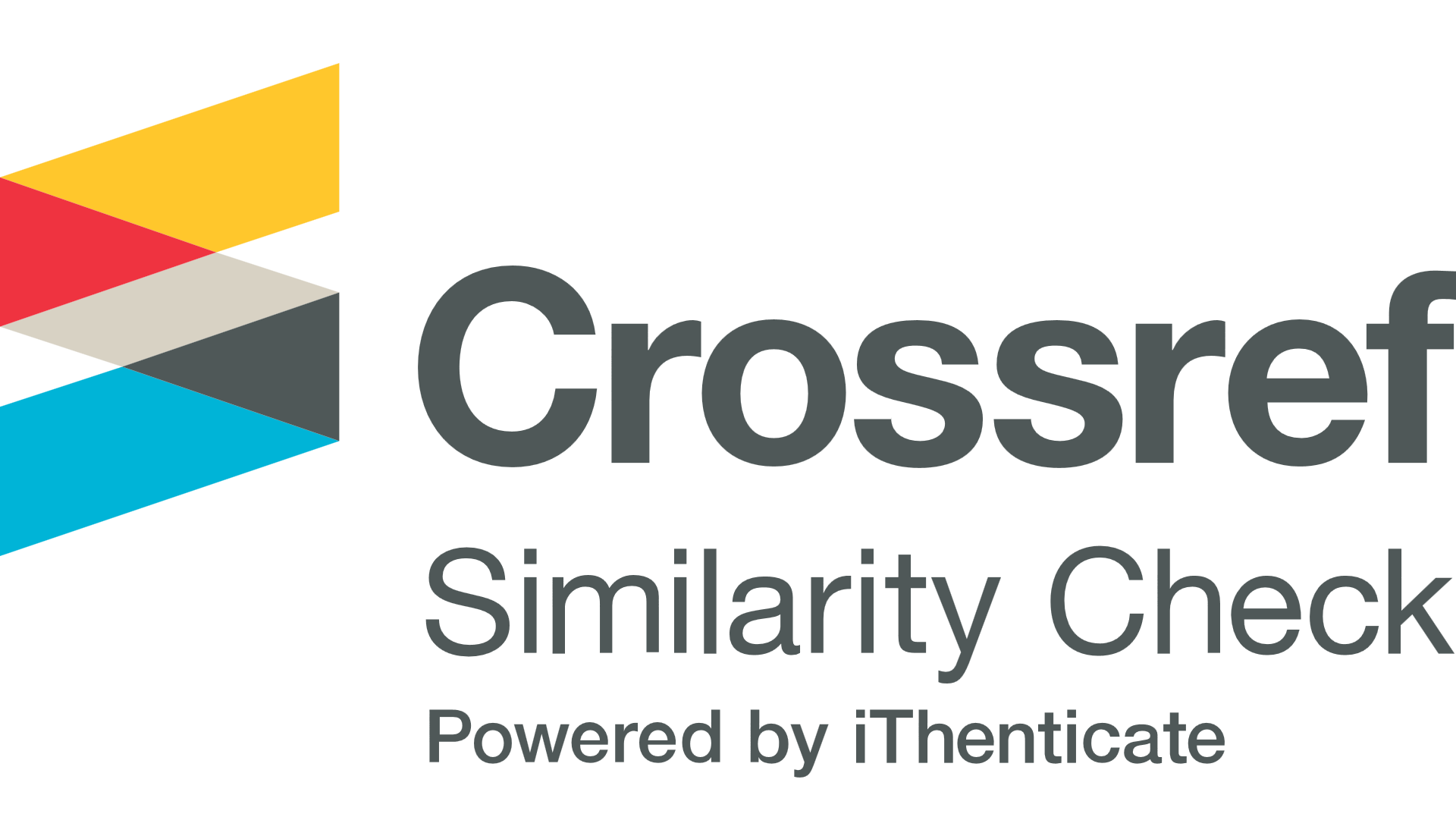Evaluation of the Pull-Up Test According to the Variables of Work and Body Measurements
Published
Oct 24, 2025Pages
314-334Abstract
The present study aims to:
- Employ the variables of work and anthropometric measurements in the pull-up test.
- Identify the contribution rates of the study variables to the pull-up test through the best regression model applied to the adjusted scores derived from the raw test scores.
- Establish new standards and levels for the test in light of work and anthropometric variables.
The researchers adopted the descriptive method using the survey approach. The sample consisted of 79 advanced-level players from clubs in Nineveh Governorate participating in team sports (football, futsal, basketball, volleyball, and handball). To obtain the necessary data, the researchers utilized the Statistical Package for the Social Sciences (SPSS). They applied several statistical tools, including mean, standard deviation, percentage, mode, skewness coefficient, Pearson’s simple correlation coefficient, and multiple regression.
The study reached the following main conclusions:
- The displacement value per single ascent in the pull-up test amounted to 90% of the arm length measured from the shoulder joint to the joint between the metacarpals and phalanges.
- There is a significant correlation between the dependent variable (repetition) and the independent variables (work, body mass, and arm length) in the pull-up test, with a correlation coefficient of 0.972.
- The study variables (work and anthropometric measurements) contributed to performance (repetition) in the pull-up test.
References
- Ibrahim, M. A. M. (1999). Scientific foundations and statistical methods for tests and measurement in physical education (1st ed.). Amman, Jordan: Dar Al-Fikr for Printing, Publishing, and Distribution.
- Abu Hatab, F., & Othman, S. A. (2008). Psychological assessment (1st ed.). Cairo, Egypt: Anglo-Egyptian Library.
- Hassanein, M. S. (2004). Measurement and evaluation in physical education and sports (6th ed.). Cairo, Egypt: Dar Al-Fikr Al-Arabi.
- Al-Hakim, A. S. J. (2004). Tests, measurements, and statistics in the sports field. College of Physical Education, University of Al-Qadisiyah, Iraq.
- Khafaji, A. A. W. (2023). Absolute standard score for the pull-up test with bent knees for track and field athletes. Journal of Theories and Applications in Physical Education and Sports Sciences, 39(5), Faculty of Physical Education, Sadat City, Egypt.
- Al-Rawi, M. M. H. (1989). Some anthropometric measurements and their relationship to specific physical fitness components among football players (Master’s thesis). Faculty of Physical Education and Sports Sciences, University of Mosul, Iraq.
- Radwan, M. N. D. (2006). Introduction to measurement in physical education and sports (1st ed.). Cairo, Egypt: Markaz Al-Kitab for Publishing and Distribution.
- Allam, S. D. M. (2000). Educational and psychological measurement and evaluation: Principles, applications, and contemporary trends (1st ed.). Cairo, Egypt: Dar Al-Fikr Al-Arabi.
- Allam, S. D. M. (2006). Educational and psychological measurement and evaluation: Principles, applications, and contemporary trends. Cairo, Egypt: Dar Al-Fikr Al-Arabi.
- Allawi, M. H., & Radwan, M. N. D. (1982). Motor performance tests (1st ed.). Cairo, Egypt: Dar Al-Fikr Al-Arabi.
- Ouda, A. S., & Malkawi, F. H. (1992). Fundamentals of scientific research in education and social sciences (2nd ed.). Amman, Jordan: Dar Al-Amal for Publishing and Printing.
- Al-Fadhli, S. A. K. (2010). Applications of biomechanics in sports training and motor performance (1st ed.). Baghdad, Iraq: Dar Dijlah.
- Qarah, K. (2020). The relationship of anthropometric measurements to specific physical fitness components in discus throw performance (ages 17–19): A field study at JABC Club, Constantine (Master’s thesis)—University of Larbi Ben M’hidi – Oum El Bouaghi, Constantine, Algeria.
- Al-Hashimi, S. M. (1999). Sports biomechanics. Mosul, Iraq: Dar Ibn Al-Atheer for Printing and Publishing.
- Al-Hazzaa, H. B. M. (2009). Physiology of physical effort: Theoretical foundations and laboratory procedures for physiological measurements, Part 1. Riyadh, Saudi Arabia: King Saud University, Scientific Publishing and Printing.
- Hisham, L., & Hussein, A. (2018). Physiology of physical effort. Al-Amali Printing, University of Oran for Science and Technology, Algeria.
- Al-Yasiri, H. S. M., & Al-Tai, O. A. H. (2008). Using the pull-up test to measure the short anaerobic capacity of arm muscles based on weight, distance, and repetition variables according to the power equation. Journal of Physical Education, 20(2), University of Baghdad, Iraq.
- Ferguson, G. (1981). Statistics and analysis in psychology and education. New York, NY: McGraw-Hill.
Identifiers
Download this PDF file
Statistics
How to Cite
Copyright and Licensing

This work is licensed under a Creative Commons Attribution-NonCommercial 4.0 International License.







